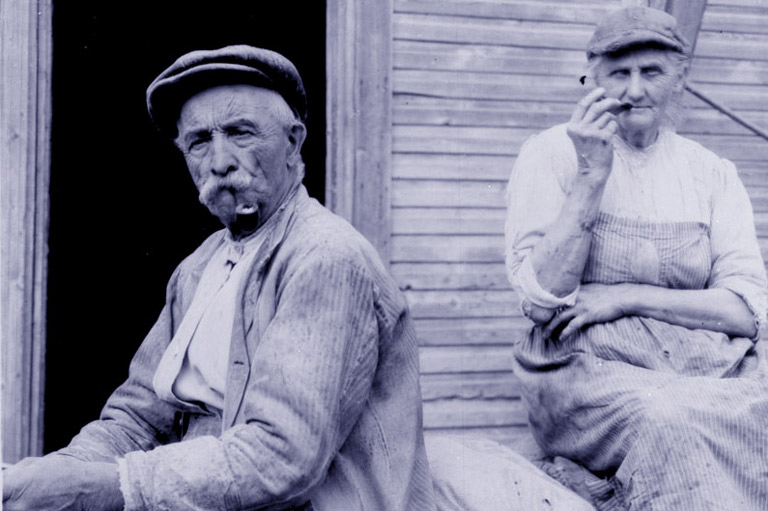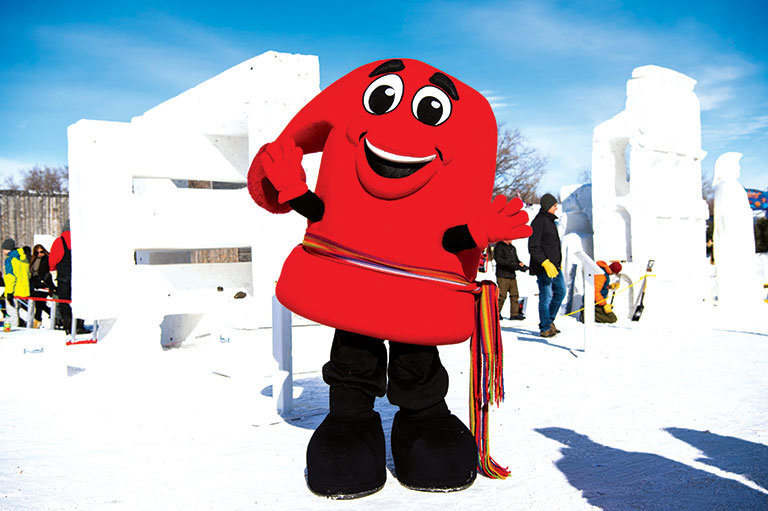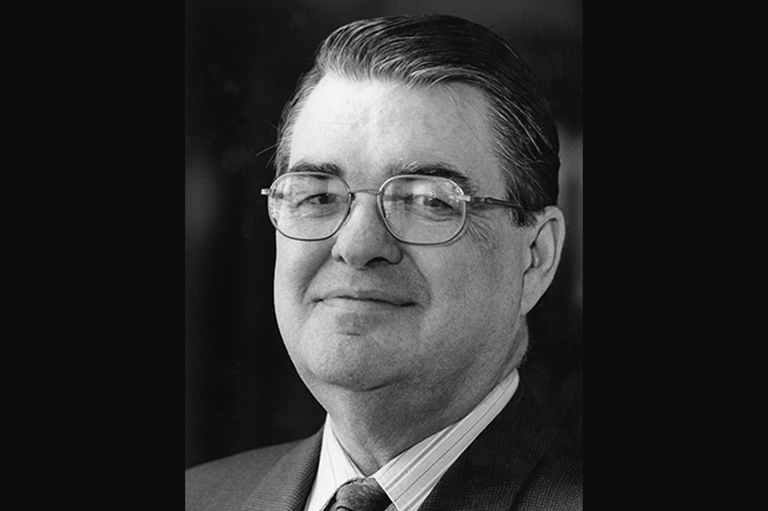The Many Faces of the French Fact

Since the Conquest, immigration has been contested terrain in Quebec. As with Ireland, Great Britain expected to hold its new colony through the anticipated arrival of large numbers of land-hungry, English-speaking Protestants. Half a century would go by before such hopes began to be realized. Immigrants came not, as hoped, from the United States, but from Britain itself, where troop demobilization after the Napoleonic Wars and the Industrial Revolution caused massive social dislocation. By 1831, Quebec City and Montreal both had British majorities. The Canadiens who, according to Lord Durham, entertained “vain hopes” of nationality, feared that this mass migration was a device to overwhelm them in their own homeland. When immigrants carried deadly epidemics of cholera and typhus to the colony, caused by the appalling conditions onboard ship, charges were made, in the overheated climate leading to the 1837 uprising led by Papineau, that Britain was deliberately trying to wipe out the Canadiens. The Canadian, in turn, were accused by British colonists of wanting to stop immigration altogether. They were certainly aware, however, that an immigration controlled not by them but by London would result in their gradual extinction.
The French fact in North America faced two new challenges after the defeat of the uprising. Industrialization presaged the French Canadians’ assimilation by triggering the movement of rural dwellers to an English-speaking urban and work environment. As well, the 1841 Union of Lower and Upper Canada threatened them with political marginalization. That the culture survived and thrived is due in part to the skillful manoeuvring of Union politicians. But in the long run this was more of a social than a political achievement, with the credit going to the Catholic Church. As a body entirely under French-Canadian control, the church conquered a public space for that culture by establishing and running a host of social and economic institutions. Nowhere else in North America would Catholic institutions be those of the majority. However, this arrangement entailed a quid pro quo: the English-speaking minority of Quebec, which included Canada’s elite, demanded the same autonomy. As a result, separate public institutions with clear denominational affiliations developed. In education, for example, English-speaking Protestants and Catholics controlled their own schools. This was the structure that later immigrants encountered as they settled in Quebec.
As well as autonomy, cultural survival depended in part on maintaining a demographic balance between British and French, a balance broken by the massive Irish migration of the 1840s. With the granting of Responsible Government in 1848, jurisdiction over immigration passed from London to the United Canadas, giving French-Canadian political leaders a say. They wasted no time in demanding that publicity and recruitment, initially directed only to Britain, extend to French-speaking Europe. Preference was also expressed for Catholic settlers. These objectives remained unchanged at Con-federation when immigration became a joint federal-provincial responsibility.
Although spurred by Ontario’s vigorous recruitment drives in Britain, Quebec met with little success in luring French-speaking immigrants. Prospective candidates had no desire to settle on marginal farmlands on the Canadian Shield, or join an industrial labour market where skilled workers spoke English, and rural French Canadians formed an abundant and cheap source of unskilled manpower. But Quebec faced an even graver problem: it could not hold its own population, as an estimated one million native sons and daughters left for the United States in the century after 1830. Tire drain was especially acute during the prolonged recession of the last quarter of the nineteenth century. Initiatives to reclaim French-Canadian expatriates put forward by Ottawa (which by the 1870s had become the key player in immigration) were very popular. Such efforts, while serious and sustained, produced few results. The French-to-British ratio remained relatively stable because of the very high French-Canadian birthrate, not immigration or re-migration.
In the early part of this century, significant numbers of newcomers from continental Europe settled in Quebec. By 1930 they comprised 6 percent of its population, including 60,000 Jews and 25,000 Italians. The children of Catholic and non-Catholic immigrants were admitted to French-Canadian institutions, such as schools, universities, and in the case of medical students, to hospitals. However, French-Canadian public authorities were also prepared to give immigrants a degree of institutional autonomy already enjoyed by English-speaking Protestants and Catholics.
Despite some degree of openness on the part of French-Canadian institutions, immigrants realized, that for reasons of work and social mobility, it was indispensable for them if possible, but certainly for their children, to have a sound knowledge of English. In the interwar years, Jews and other non- French and non-British immigrants made up almost half of the students in English-language Protestant and Catholic schools. Italians were the only exception, with 62 percent attending French-language institutions. These fig-ures highlight the economic power of the English language and the social inferiority of French Canadians in their own homeland.
The Second World War was in many ways a turning point. The accommodation worked out during the Union of 1841 was under attack on many fronts. The federal government, where French Canadians exerted little real power, became committed to state intervention in social and cultural areas that had been controlled in Quebec by French Canadians. As well, accelerating rates of urbanization and a decline in religious vocations made it ever more difficult for the church to fulfill its historic role. Secularization, together with a large wave of postwar immigration, contributed to a growing sense of diversity. As well, the decline of Montreal as Canada’s metropolis undermined the political clout of English speakers in the province.
Meanwhile the old concern about maintaining a demographic balance resurfaced, but under a new guise. Since French-speaking communities outside of Quebec and Acadia were fast succumbing to linguistic assimilation, the concept of “French Canada” was losing its relevance. Was not Quebec the only viable French-speaking territory in Canada? But even within the province, the birth rate began to drop sharply after the blip of the baby boom, falling below replacement levels by the early 1970s. As well, Italians now joined other recent immigrants in sending their children overwhelmingly (90 percent) to English-language schools.
Nationalists called on the Quebec government to end the segregation that was part of the Union compromise, create common institutions for all Quebeckers, and take charge to ensure that newcomers would in future identify with the majority culture. In line with these new realities, a pluralistic concept of identity replaced the monolithic one defined during the Union years: French Canadian, a term rooted in common ancestry, religion, and language, gave way to Québécois, one based on territory and language. No longer did one have to be Catholic or French Canadian to embrace the new identity.
Beginning with the creation of a Quebec ministry of immigration in 1968, the government gradually implemented the nationalist program. A series of agreements were signed with Ottawa that ensured the province’s eventual control over immigrant selection and integration. Legislation adopted in the 1970s clearly signalled that French was to be the public language of Quebec. Such initiatives, however, were not all one-sided. A policy statement formally recognized immigrants’ contribution to society and culture and offered them services in their language of origin. Recently, affirmative action programs have sought to boost immigrants’ presence in the private and public sectors. Quebec has also welcomed the new entrepreneurial class of immigrant, expecting it to provide a much-needed stimulus to the province’s economy.
These policies have been remarkably similar to those of Ottawa, combining self-interest in the use of immigrants to achieve economic and demographic targets with a degree of humanitarian concern. But their central focus continues to be maintaining the French fact in North America in the face of historically hostile (British) or indifferent (English-Canadian) players. This makes the issue of control a crucial one, although larger economic forces place real constraints on such control. In the past, both Canada and Quebec have had difficulty retaining their immigrants. The province’s higher-than-average unemployment rate and its lower capacity to create jobs (compared to neighbouring Ontario) limits its absorptive capacity.
Quebec’s non-French and non-British elements now surpass the British minority, standing at over 10 percent of the population. The language legislation of the 1970s has channelled most of these groups’ children to French-language schools. Still, there is among them a deep ambivalence regarding the new Quebec. The two largest groups, Italian and Jewish, who arrived and were integrated into the Quebec of autonomous linguistic communities, found the transition particularly difficult. In their case, the legacy of bitterness and suspicion from the language laws will not be quickly overcome. For their part, the newer immigrants, many of whom come from Third World countries, are bewildered by competing claims for loyalty to Canada and Quebec. Their ambivalence will only be dispelled when the Quebec issue is finally resolved. But one has to go beyond politics to see the lived reality of a pluralistic French Quebec where interethnic and interracial contact, including marriage, is on the rise. This will perhaps prove to be the more lasting legacy of the new Quebec.
Themes associated with this article
Advertisement
With 7 uniquely curated newsletters to choose from, we have something for everyone.




